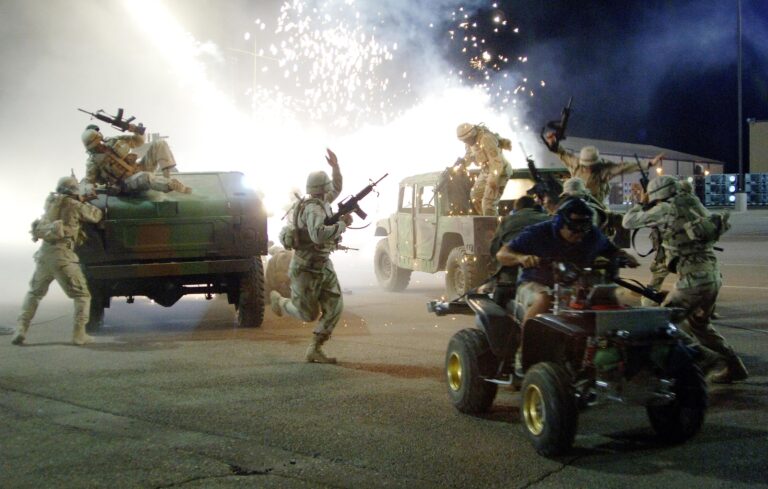The U.S. Department of Defense and Hollywood: Crafting Military Narratives with Precision
Influence of the Department of Defense on Military Storytelling in Film
For decades, the U.S. Department of Defense (DoD) has maintained a close alliance with Hollywood, playing a crucial role in shaping the depiction of military life and operations on screen. This partnership is mutually advantageous: filmmakers gain access to authentic military equipment and expertise, while the DoD leverages these portrayals to influence public opinion and bolster recruitment efforts. By collaborating on scripts and production details, the DoD ensures that cinematic narratives reflect American defense values and strategic messaging.
However, this support is contingent upon a thorough review process. The DoD evaluates scripts to verify that military procedures, protocols, and ethos are accurately represented. When a project aligns with these standards, it often receives:
- Expert technical advice from active military personnel
- Access to authentic military hardware and facilities to enhance realism
- Assistance with logistical coordination and background research
Through this selective collaboration, the DoD strategically promotes themes such as valor, sacrifice, and technological advancement, reinforcing narratives that support both public approval and military recruitment.
Advantages of Military-Hollywood Collaborations for Public Engagement and Recruitment
The alliance between the DoD and the entertainment industry extends well beyond artistic cooperation; it serves as a deliberate strategy to shape societal perceptions of the armed forces. By partnering with filmmakers, the DoD ensures that military depictions are not only compelling but also aligned with national security interests. This collaboration allows the military to highlight cutting-edge technology, rigorous training, and strategic operations within accessible storylines, fostering public pride and trust.
Additionally, these productions often function as indirect recruitment platforms, inspiring viewers-especially younger demographics-to consider military service by portraying service members as complex, relatable heroes.
- Expertise Sharing: Military consultants provide real-time insights to ensure authenticity in dialogue, tactics, and equipment use.
- Narrative Guidance: The DoD influences story arcs to emphasize values like honor, resilience, and dedication.
- Resource Provision: Supplying genuine gear, locations, and personnel elevates production quality and reduces costs.
- Recruitment Impact: High-profile films and series serve as effective outreach tools, expanding the military’s appeal.
| Benefit | Effect |
|---|---|
| Authenticity | Boosts credibility of military portrayals |
| Control Over Story | Shapes favorable public attitudes |
| Resource Access | Enhances visual and technical quality |
| Recruitment | Encourages enlistment interest |
Inside Access: The Crucial Role of Defense Advisors in Film Production
Beyond lending equipment and locations, the DoD embeds Defense Advisors within film productions to ensure the portrayal of military operations and personnel is both accurate and respectful. These advisors collaborate closely with directors and actors, offering expertise on military protocols, tactics, weapon handling, and communication procedures. Their involvement bridges the gap between dramatic storytelling and factual representation, helping productions maintain operational integrity.
This partnership serves multiple objectives: enhancing recruitment, educating the public about military missions, and fostering positive civil-military relations. Defense Advisors typically contribute by:
- Reviewing scripts for technical accuracy and appropriate language
- Training actors in authentic military drills and terminology
- Supervising the correct use of military gear and uniforms
- Advising on sound design and combat choreography
- Ensuring compliance with operational security standards
| Advisor Role | Primary Responsibility |
|---|---|
| Script Consultant | Guarantees realistic military scenarios |
| Technical Trainer | Prepares actors for credible performances |
| Operational Supervisor | Maintains security and protocol adherence |
Guidelines for Authentic and Respectful Military Portrayals in Cinema
The DoD-Hollywood partnership is grounded in a shared commitment to authenticity and respect for service members. By granting filmmakers access to military assets and personnel, the DoD helps ensure that portrayals are not only visually accurate but also honor the dedication and sacrifices of those in uniform. This collaboration supports realistic storytelling by providing script evaluations and technical advice, which prevent common inaccuracies that could undermine a film’s credibility.
Essential principles for effective military representation include:
- Dignified Depiction: Portraying service members with honor, emphasizing their bravery, discipline, and teamwork.
- Detail-Oriented Accuracy: Correct use of uniforms, military jargon, and tactical procedures to maintain believability.
- Balanced Storytelling: Presenting nuanced narratives that reflect the complexities of warfare without glorification or oversimplification.
| Focus Area | DoD Contribution | Benefit to Filmmakers |
|---|---|---|
| Technical Precision | Provides military advisors | Increases authenticity |
| Equipment Access | Offers vehicles and gear | Enhances production realism |
| Script Evaluation | Recommends realistic revisions | Prevents misrepresentation |
Looking Ahead: The Evolving Relationship Between the DoD and Hollywood
The collaboration between the U.S. Department of Defense and Hollywood continues to evolve, reflecting changes in both military strategy and media consumption. As streaming platforms and digital content expand, the DoD’s influence on military storytelling is reaching broader and more diverse audiences than ever before. This ongoing partnership not only ensures that military narratives remain authentic and respectful but also adapts to new storytelling formats and technologies.
Understanding this dynamic relationship offers valuable insight into how national security themes are crafted and disseminated in popular culture, highlighting the intersection of entertainment, public perception, and defense policy.




